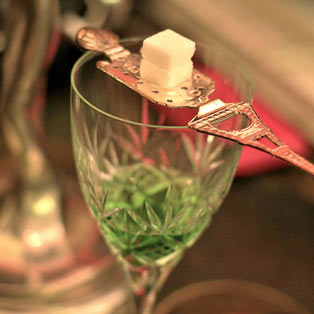News
The truth about absinthe
Friday, April 15th, 2011
It was banned in some countries for decades, has a reputation for causing hallucinations, and is blamed for the amputation of Van Gogh’s ear, but what is the truth about absinthe? Is it truly the villain everyone says it is, or just an innocent alcoholic beverage with a somewhat high alcohol content?
Does absinthe cause hallucinations?
According to contemporary research, the allegations of absinthe causing hallucinations are somewhat unfounded. Absinthe contains wormwood – artimisia absinthium – which in turn contains thujone, a chemical which in very high doses can be toxic. The distillation process, however, removes almost all the thujone, and in any event, there is no evidence that thujone can cause hallucinations – even if enough of it did survive the distillation process.
Despite this, many of us have heard the stories told by absinthe drinkers, of fantastical hallucinations, and supernatural experiences associated with the drinking of absinthe. This perhaps, is explained, by the extraordinarily high alcohol content – anywhere from 55 to 75%.
Local distillers, Jorgensens, make an authentic 72% absinthe, using a recipe from 1871. “Our Absinthe does not, though, as per the legend, make you hallucinate (much), see green fairies, paint like Degas, write like Hemmingway or be as wild as Wilde” say the company.
How is it made?
Absinthe can either be made by distillation, or cold mixing – adding artificial flavourings and colourings to high-proof alcohol in the same way that vodka is flavoured. Locally, Jorgensens make a traditional, organic absinthe, using a double distilled dry white wine as a base. They then add wormwood, green anise and fennel, angelica root, calamus root, liquorice root and orris root. Melissa, hyssop, wild dagga, wild mint, roman wormwood and angelica leaves are used for colouring, and Cape buchu and wild rose geranium for odour.
How should I drink it?
Traditionally, absinthe is served with a sugar cube, which balances above the drink on an elaborate, specially-designed spoon. Iced water is then dripped over the sugar cube, until the ratio is approximately one part absinthe to 3 to 5 parts water. Drunk this way, the spirit has a slightly sweet flavour, with fresh, grassy notes.
If you’re not willing to brave the green fairy neat, you could try an Absinthe cocktail, though there’s no guarantee that this will decrease the potency of the drink. Hemingway’s cocktail, which he contributed to a book of celebrity cocktail recipes, involved pouring champagne over one jigger of absinthe – a mixture the writer appropriately dubbed ‘Death in the Afternoon’. Victorian recipes show that absinthe has been mixed with Grenadine, Cognac, bitters, Vermouth, Calvados and rum.
If you're brave enough to wrestle with the green fairy, try out one of these bars:
By Katharine Jacobs, research by Angelique Smith








